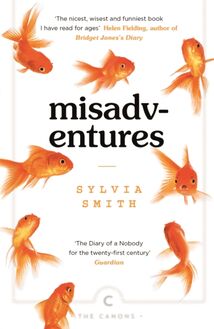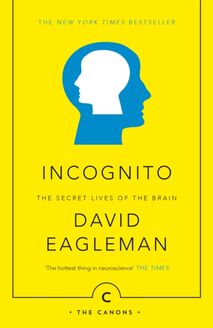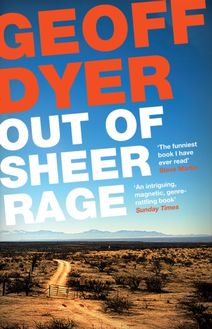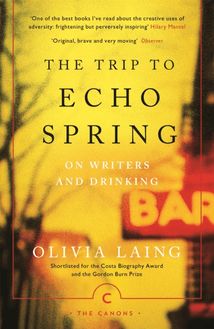-
 Univers
Univers
-
 Ebooks
Ebooks
-
 Livres audio
Livres audio
-
 Presse
Presse
-
 Podcasts
Podcasts
-
 BD
BD
-
 Documents
Documents
-
- Cours
- Révisions
- Ressources pédagogiques
- Sciences de l’éducation
- Manuels scolaires
- Langues
- Travaux de classe
- Annales de BEP
- Etudes supérieures
- Maternelle et primaire
- Fiches de lecture
- Orientation scolaire
- Méthodologie
- Corrigés de devoir
- Annales d’examens et concours
- Annales du bac
- Annales du brevet
- Rapports de stage
La lecture à portée de main
Vous pourrez modifier la taille du texte de cet ouvrage
Découvre YouScribe en t'inscrivant gratuitement
Je m'inscrisDécouvre YouScribe en t'inscrivant gratuitement
Je m'inscrisEn savoir plus
Vous pourrez modifier la taille du texte de cet ouvrage
En savoir plus

Description
Informations
| Publié par | Canongate Books |
| Date de parution | 01 mai 2014 |
| Nombre de lectures | 0 |
| EAN13 | 9781782114369 |
| Langue | English |
| Poids de l'ouvrage | 4 Mo |
Informations légales : prix de location à la page 0,0440€. Cette information est donnée uniquement à titre indicatif conformément à la législation en vigueur.
Extrait
Dame Margaret Drabble was born in Sheffield in 1939 and was educated at Newnham College, Cambridge. She is the author of twenty highly acclaimed novels. She has also written biographies and screenplays, and was the editor of the Oxford Companion to English Literature . She was appointed CBE in 1980, and made DBE in the 2008 Honours list. She was also awarded the 2011 Golden PEN Award for a Lifetime s Distinguished Service to Literature. She is married to the biographer Michael Holroyd.
Also by Margaret Drabble
FICTION
A Summer Bird-Cage
The Garrick Year
The Millstone
Jerusalem the Golden
The Waterfall
The Needle s Eye
London Consequences (group novel)
The Realms of Gold
The Ice Age
The Middle Ground
The Radiant Way
A Natural Curiosity
The Gates of Ivory
The Witch of Exmoor
The Seven Sisters
The Red Queen
The Sea Lady
The Pure Gold Baby
The Dark Flood Rises
SHORT STORIES
A Day in the Life of a Smiling Woman:
The Collected Stories
NON-FICTION
Wordsworth (Literature in Perspective series)
Arnold Bennett: A Biography
For Queen and Country
A Writer s Britain
The Oxford Companion to English Literature (editor)
Angus Wilson: A Biography
The Pattern in the Carpet
The Canons edition published in Great Britain in 2022 by Canongate Books This digital edition first published in 2014 by Canongate Books canongate.co.uk First published in hardback in Great Britain in 2000 by Viking, an imprint of Penguin Books Copyright Margaret Drabble, 2000 British Library Cataloguing-in-Publication Data A catalogue record for this book is available on request from the British Library ISBN 978 1 83885 716 5 eISBN 978 1 78211 436 9
For Kathleen Marie Bloor
On Remembering Getting into Bed with Grandparents
It’s amazing we got that far, loveless,
As you were supposed to be, yet suddenly
I have a longing for your tripeish thigh;
Swallows, thronging to the eaves; a teasmade
Playing boring Sunday news and all sorts of
Rites and rituals which seemed notable but
Were really just trips in and out of the
Bathroom, the neurotic pulling back of
Curtains, stained-glass window at the top of
Hall stairs; dark chocolate like the secret
Meaning of the world in a corner cupboard:
Three-quarter circle smooth as a child’s
Dreams and as far above reach . . .
‘Loveless,’ the daughters said, years later when
The slow-lack peppered in their brains like a dust,
And life had grown as troublesome as thought.
Yet just tonight, I am dreaming of your thigh,
And of the unconscious swallows thronging to the eaves.
Rebecca Swift, 1993
Contents
Prologue
Afterword
PROLOGUE
It is a hot summer afternoon, in the hall of a Wesleyan Methodist chapel in South Yorkshire. Here they gather, the descendants. Where have they all come from, and who has summoned them? Is this a religious occasion? Are we about to hear a sermon? Sermons hang heavy in the air, for in this hall the ancestors endured decades of almost intolerable boredom. But we don’t have to put up with that kind of thing these days. We have moved on. If it’s a sermon, we’ll leave quickly, by the side door.
It’s surprising this chapel is still available for functions at all. It’s surprising it hasn’t been privatized. The Primitive Methodists down the road in Bank Street have been turned into a modest dress shop, and the chapel at Cotterhall is now a warehouse. In other parts of England, churches and chapels have been deconsecrated and turned into private houses, public houses, restaurants. But there isn’t the money for that kind of thing round here. There isn’t the call.
It’s quite a large gathering. There are sixty or so people here, many but not all of them elderly. Tables are spread with refreshments concealed beneath white cloths, just as they might have been in the nineteenth century. But it’s not the nineteenth century. It’s the present, or possibly even the future. The hall is dominated by a large screen, set up for communal viewing, but this isn’t going to be an illustrated talk with slides on ‘Flora and Fauna of the Rocky Mountains’ or ‘The Life Cycle of the Honey Bee’, such as the ancestors used to watch before television was invented. It’s much more modern than that. This is the electronic, digital age, and that screen is the very latest of its kind.
The walls, if you look more closely, appear to be covered with charts and family trees. Diagrams of brightly coloured molecules and double helices are on view. This is some sort of genealogical assembly. The letters DNA appear upon a large banner. It is a computer-designed and computer-printed banner. Nobody has time for cross stitch and herringbone and tapestry now. There may still be some worn dusty old hassocks amongst the pews next door, and some of those gathered together here may once have knelt and prayed upon them. But the mood of this meeting has nothing to with prayer. It is a scientific meeting, and microbiologist Dr Robert Hawthorn is about to address his flock upon the subject of mitochondrial DNA and matrilineal descent.
The descendants have been lured here by free refreshments and by curiosity and by boredom. There is not much to do of an afternoon in Breaseborough, and they are willing to give Dr Hawthorn a hearing. Some of them are locals who have dropped in on the off chance of hearing something interesting about their own family backgrounds, or about the discovery in the cave. Others have come from further afield, summoned by Mr Cudworth, convenor of the Cudworth One-Name Society. A few look as though they have no place here at all.
Cast your eye around, and see if you can discern a pattern amongst these descendants. Can you tell from whom they may descend, can you discern the form of their common ancestor? Will Dr Hawthorn be able to reveal their origins to them, and if he can, will they want to know?
It’s wonderful what science can tell you these days. It can tell you all sorts of things you’d be better off not knowing. That’s what some of the old folk are thinking. You were better off in ignorance. But you can’t turn the clock back, can you?
The big old plain-faced wind-up clock on the wall, which had seemed to stand still through long hours of tedious Sunday School during Bessie Bawtry’s long-ago childhood at the beginning of the century, now stands still for ever. It is stuck at twenty-eight minutes to eleven. Nobody bothers to wind it now, though it might start ticking again if someone were to bother to try. They made things to last, in the old days. You could probably get it to go again. But why bother, when everyone has a watch or a mobile telephone? When you can tell the time from the microwave on the draining board in the kitchenette? When Dr Hawthorn’s computer screen tells you in large glowing green digits that it is 15.27 hours precisely?
The seconds pulse onwards towards the next minute, and the digits flick slickly and silently to 15.28 hours. The show is due to begin at half past three, and most of the descendants are already waiting expectantly. The side door opens, and in shuffles a short stout old woman. She has been out to the toilet. People nod at her as she makes her way back to her seat. She is well known to most of the congregation. She ignores their signs of recognition and concentrates on regaining her chair at the end of the second row. She sits down on it, heavily.
Next to the stout old woman sits a beautiful young woman. What on earth is she doing here? She is radiant with light. She dazzles. She is a bobby-dazzler. She has surely walked in out of some other plot. She cannot be the daughter of that old woman, can she, although they are sitting close together and whispering to one another? She is too young. The granddaughter, perhaps? But the old woman is single, and has no children. Her spinster status is both known and manifest.
So who is the beauty with the huge eyes and the golden earrings and the lipstick? Is she the one from London? Is she one who got away? Is she a freak, or is she the future?
Back in the slow past, Bessie Bawtry crouched under the table, in an odour of hot plush and coal dust. Her painted bobbin perched upon its secret shelf, and she alone could see it. It was her friend. She was safe in her wooden cave. She could look up at a roof of nails and notches and splinters. They could not see her here. She was doing no wrong here. They were not angry with her when she sat in here. Beyond the bronze tasselled fringe of the cloth, a dull gleam of brass shone from the fender. The firelight reflected from the wicked tall fire-irons, and glinted upwards from the safe smooth blunt pedals of the silent piano. A thick dirty warmth filled the small close room and her smaller cavern.
This was the coal belt, and coal was its bed and being. Coal seamed the earth, coal darkened the daytime air, coal reddened the night skies. Bessie hated the coal. She was fastidious and rare. Smells offended her, grit irritated her. How could they live, up there, in such coarse comforts, so unknowingly? She was alien. She was a changeling. She was of a finer breed. She could hear her father sucking on his pipe. Spittle, dottle, wet lungs, wet lips, wet whiskers. Unutterable revulsion had set up its court in her small body. She was hiding in her underground cell with its fluted pillars, and already she was plotting her escape.
Would she make it? The odds would seem to be against her. Her ancestors had bred upon this spot for eight thousand years of as yet unrecorded time. The recording angel will attend, with folded wings, by the glimmering screen, waiting for Dr Robert Hawthorn to press the Start Button. Dr Robert Hawthorn, a little shining man of the future, as yet unborn, will be a direct matrilineal connection of Bessie Bawtry, however unlikely that connection might seem. Dr Hawthorn will make it part of his mission to track the Bawtrys back to prehistory, taking in on the way Bessie herself, and all her descendants an
-
 Univers
Univers
-
 Ebooks
Ebooks
-
 Livres audio
Livres audio
-
 Presse
Presse
-
 Podcasts
Podcasts
-
 BD
BD
-
 Documents
Documents
-
Jeunesse
-
Littérature
-
Ressources professionnelles
-
Santé et bien-être
-
Savoirs
-
Education
-
Loisirs et hobbies
-
Art, musique et cinéma
-
Actualité et débat de société
-
Jeunesse
-
Littérature
-
Ressources professionnelles
-
Santé et bien-être
-
Savoirs
-
Education
-
Loisirs et hobbies
-
Art, musique et cinéma
-
Actualité et débat de société
-
Actualités
-
Lifestyle
-
Presse jeunesse
-
Presse professionnelle
-
Pratique
-
Presse sportive
-
Presse internationale
-
Culture & Médias
-
Action et Aventures
-
Science-fiction et Fantasy
-
Société
-
Jeunesse
-
Littérature
-
Ressources professionnelles
-
Santé et bien-être
-
Savoirs
-
Education
-
Loisirs et hobbies
-
Art, musique et cinéma
-
Actualité et débat de société
- Cours
- Révisions
- Ressources pédagogiques
- Sciences de l’éducation
- Manuels scolaires
- Langues
- Travaux de classe
- Annales de BEP
- Etudes supérieures
- Maternelle et primaire
- Fiches de lecture
- Orientation scolaire
- Méthodologie
- Corrigés de devoir
- Annales d’examens et concours
- Annales du bac
- Annales du brevet
- Rapports de stage




















